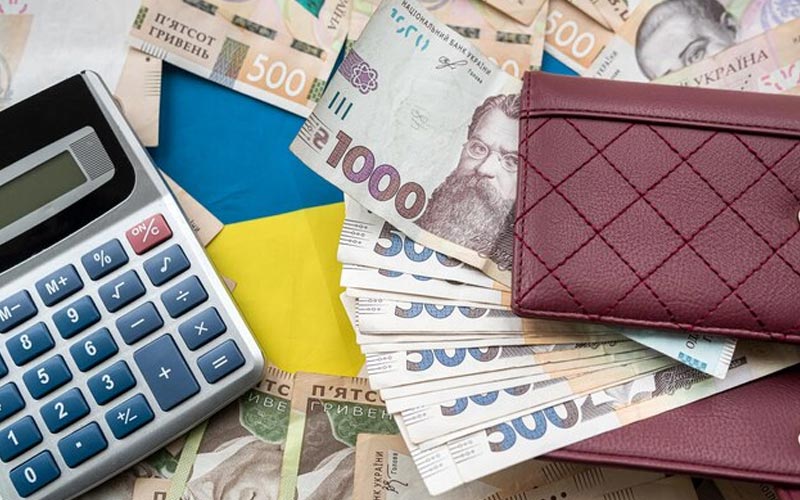Statistics vs. reality: how Ukrainians really live
24 June 12:48
Despite the growth of nominal wages in hryvnia (UAH 25,000 on average in June), real living standards are often deteriorating due to several factors: inflation outpaces income growth, the hryvnia depreciates against foreign currencies, imported goods become more expensive, and a significant number of people work unofficially or part-time and do not receive the average salary. In addition, the costs of housing, travel, and medical care have increased due to the war, and wage increases are often limited to certain sectors. As a result, purchasing power is declining, and life is becoming more expensive and difficult for most Ukrainians. Why real incomes have been diverging from official ones over the past 15 years, analyzed
Inflation eats away at wage growth
If prices for goods and services grow faster than wages, purchasing power falls. For example: a salary has increased from UAH 12,000 to UAH 18,000 (by 50%), but bread, rent, and utility bills have increased by 70%. As a result, you can buy less than before.
This will be especially noticeable after 2022, when prices for food, fuel, medicines, and utilities start to rise.
Hryvnia depreciation
If your salary in hryvnia is growing and the hryvnia is depreciating, it means that you earn no more, and sometimes less, in dollar terms.
In 2013, the average salary was UAH 3,619 ≈ $453 (exchange rate 8 UAH/USD).
In 2022, the average salary will be 14,500 UAH ≈ $421 (exchange rate 35 UAH/USD). In hryvnia terms, the salary has increased 4 times, while in dollars it has decreased.

This means that Ukrainians are getting poorer compared to other countries.
Changes in the structure of the economy
After the outbreak of full-scale war, many businesses closed, especially in industrial regions, and some jobs went into the “shadows.”
Often, salary increases in the public sector or in certain industries do not correspond to the overall welfare of people.
Growth of “hidden” costs
Expenditures on healthcare, education, medicines, gasoline, and equipment are constantly growing.
If a family used to be able to save some of its income, now it often has to spend it on survival.
Income inequality
Often, the average salary is “cosmetic” – in Kyiv or in IT, it is 40-60 thousand UAH. In a small town or village, it’s UAH 9-12 thousand.
Thus, the average figure does not reflect the real situation of the majority of the population.
Real vs. nominal salary
Nominal salary is what is written in your paycheck. Real salary is what is adjusted for inflation.
For example, in 2023, nominal wages grew by 12%, and inflation was 18%, so real wages decreased. Nominal wages can grow, but real living standards can fall if:
- prices grow even faster (inflation),
- the national currency depreciates (devaluation),
- mandatory spending increases,
- wages are growing only “on paper” or in a narrow sector.
Statisticshave nothing to do with reality
Unfortunately, as noted in the commentary
“It is incorrect to focus on the average salary. The fewer working people there are, the greater the imbalance will be at the expense of certain industries. This does not mean that the level of welfare has somehow increased. Everything is very sad. Our statistics have nothing to do with reality,” the economist believes.
Today, more than half of Ukrainians’ expenditures are spent on food, which has risen in price by an average of 50% over the past year. At the same time, inflation in May 2025 reached 15.9%, which is 0.8% more than in April (15.1%).
Food inflation in May was 22.1%, which is explained by weather conditions, a decline in agricultural production, and rising energy costs due to attacks on infrastructure.
Utilities went up by 20.1%, communications by 18.5%, and healthcare by 13.1%. In fact, prices for products and services are already European, but salaries are not. In Poland, the average salary is 6,000-7,000 zlotys (1,500-1,700 euros), and the subsistence level is 4,000 zlotys. In our country, it’s sad.
“Recently, everything in Ukraine has only become more expensive, and the only thing that has remained at the same level as before is public transportation. That’s it. Nothing else has fallen in price. At the same time, social standards have remained at the level of last year – the minimum wage of UAH 8,000 has remained, although it is already 30% less than the subsistence level, which the Ministry of Social Policy has calculated at about UAH 11,000. But where can a person with a minimum wage get the missing UAH 3,000? Although the subsistence minimum is a unit of survival, not life,” says Havrylechko.
And, according to the most conservative estimates, today a Ukrainian needs at least 40 thousand hryvnias a month to live a normal life. Because the costs will continue to grow.
But if we do not take into account the data of the State Statistics Service, which, when calculating the average salary, includes the income of ministers, civil servants, police and others who have recently received a pay raise, the average salary in the country will be 15-18 thousand hryvnias – and “live as you wish.”
The author: Alla Dunina









